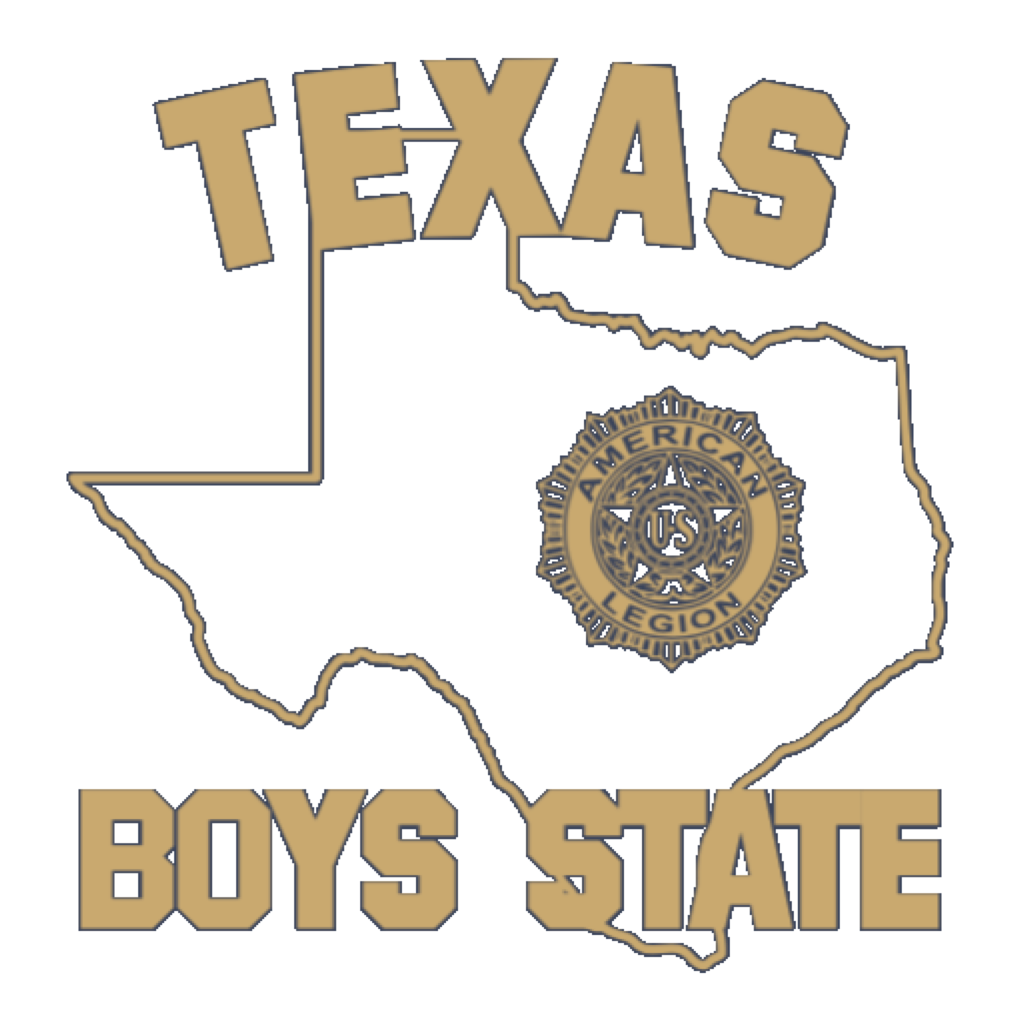What is Texas Boys State?
What is Texas Boys State?
About The Program
American Legion Boys State is among the most respected and selective educational programs of government instruction for high school students. It is a participatory program where each student becomes a part of the operation of his local, county, and state government.
At American Legion Boys State, participants are exposed to the rights and privileges, the duties and the responsibilities, of a franchised citizen. The training is objective and practical, with city, county, and state governments operated by the students elected to the various offices.
Quicklinks
History of Boys State
The youth movement in the United States known as Boys State originated by the Illinois Department of The American Legion in 1934. The plan was adopted by the national organization in 1935, and has been put into operation in 48 states. Our two most recent states, Hawaii and Alaska, do not operate their own programs but do send delegates to other states. A Boys State is operated in the Panama Canal Zone and the District of Columbia. By authority of a mandate of the 1939 Department Convention held in Waco, the Americanism Committee met in Austin with Commander Lou Roberts of Borger and made plans for the first Boys State of Texas.
Carrie Wilcox, Department Historian of The American Legion, Department of Texas, describes the first Lone Star Boys State in her book, The American Legion in Texas, as follows:
"This program was destined to grow in scope and value. Lee O. Smith of Beaumont headed a staff of capable, enthusiastic counselors as 108 boys registered for Lone Star Boys State in Austin, June 10, 1940. The boys, under the direction of the staff, were divided into three political parties. They elected a full complement of state, county, and city officials. Their elections were held on Tuesday and their state government functioned until the close of the meeting on Saturday, June 15. Conferences were held during the week in which counselors lectured on the Constitution and the separate branches of government. Citizenship bureaus and courts functioned and bills were drawn up and passed. The boys edited and published a daily paper, The Lone Star Stater, which became the official publication of the organization. The groups were housed in Prather Hall at The University of Texas. The climaxing affairs included the Governor’s Ball, honoring the governor of Boys State and his staff. John Robert Lee Keig, Jr. of Beaumont was elected Governor and Grady Baskin of Cameron was elected as Lieutenant Governor. The boys told the counselors at the close of the program that they had learned more about the operation of the state and municipal governments in the brief period of Boys State than at any other time in their lives."
Carrie Wilcox, Department Historian of The American Legion, Department of Texas
From the beginning of Boys State described above, the Texas Boys State has grown in program and in numbers to meet the needs of the youth of Texas. The present program includes several hundred of the youth leaders of our state each year.
Participants are selected on a competitive basis by the local high schools and Legion Posts throughout the State of Texas.
The staff serving Boys State is made up of men and women of the Legion, Legislators and former Boys Staters who voluntarily give of their time and energies to this program of citizenship development. Most of these men are outstanding in the field of education, law and government who leave their busy jobs and come into Austin to serve their state and nation by helping the young leaders learn better how to perform their responsibilities of a free citizen. The staff will include many individuals serving in the capacities of counselors, junior counselors and administrative staff. Former Boys Staters are called upon to serve as junior counselors or advisors to the Boys Staters. Many have served faithfully for many years and are promoted to the senior status by the leadership team.
Thanks to The University of Texas, Boys State in Texas enjoys the finest facilities in which to carry out the program. The program has received the “red-carpet” treatment each year as it returns for another session. The University of Texas, the State Capitol and the City of Austin go all-out to provide the necessary services to make the program the tremendous success it enjoys from year to year.
— Top of Page —

